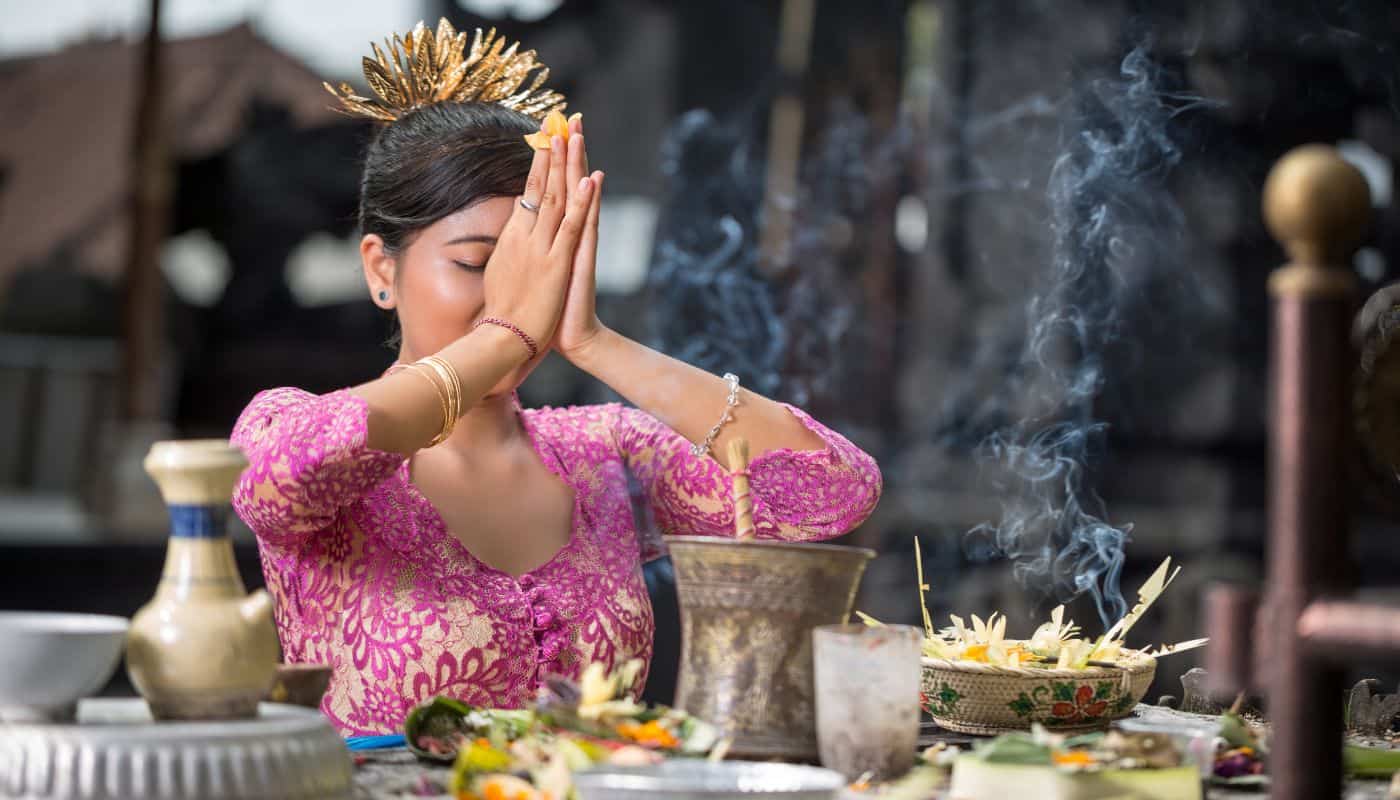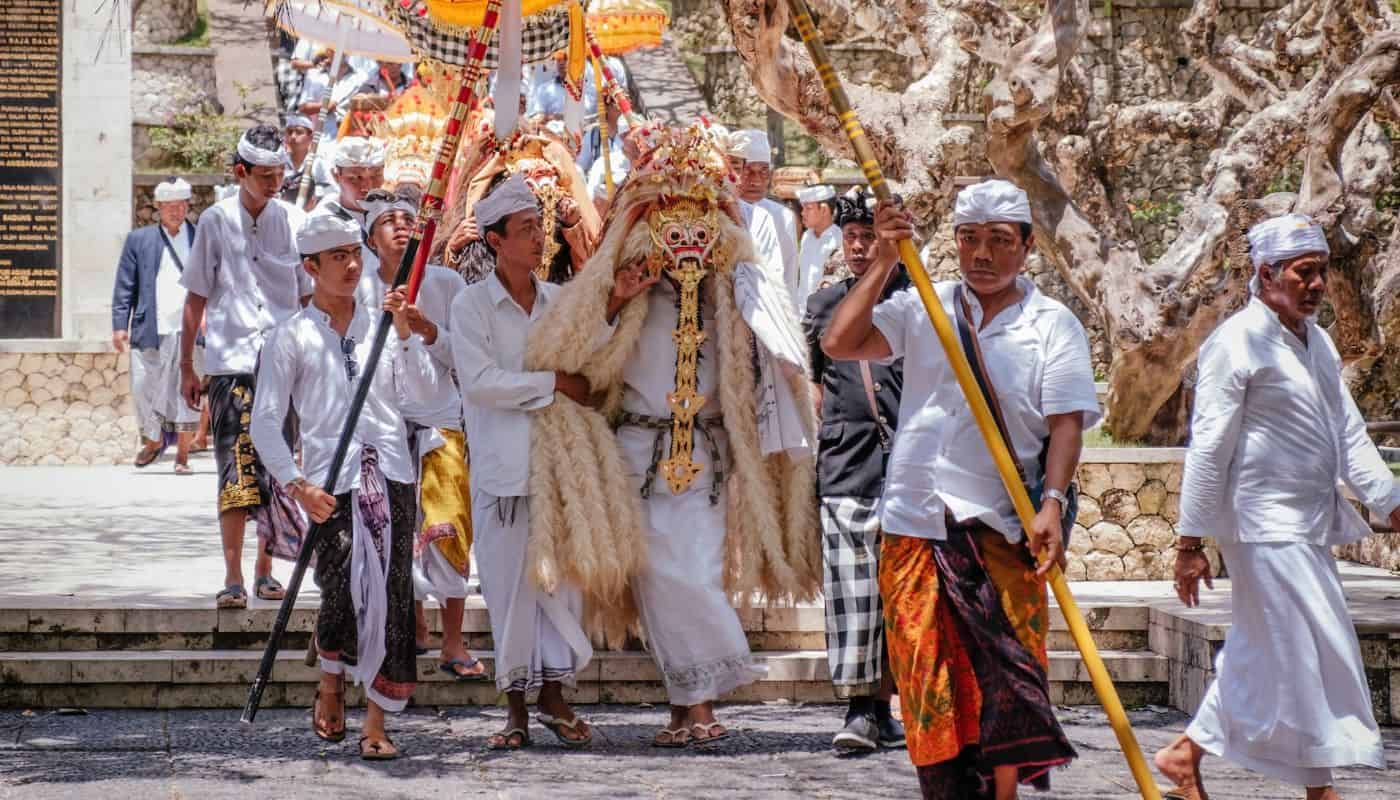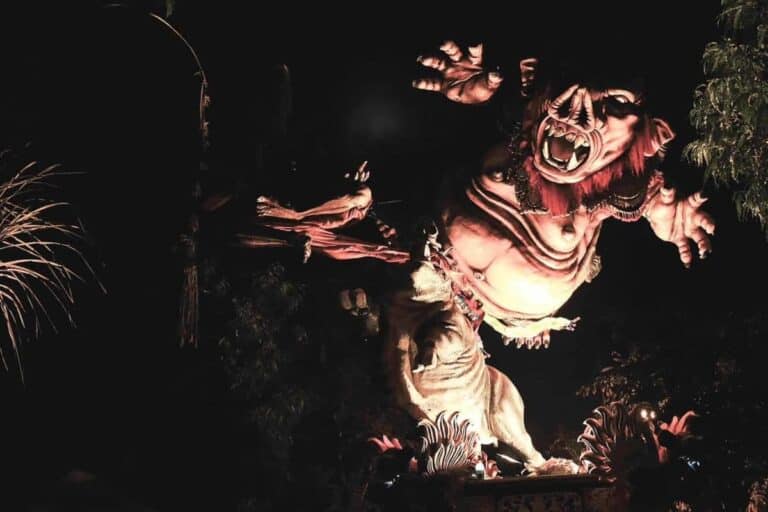One of the unique allures of Bali is the totally amazing culture and religion that you see practiced across the island.
The Balinese form of Hinduism is really special, filled with celebrations, rituals and practices that run throughout the entire year.
Balinese Hindus celebrate everything – from marriages and new babies, to their vehicles, school books and full moons.
An incredibly fascinating and intricate religion, here is a deeper insight into Balinese Hinduism.
About Balinese Hinduism

Derived from a combination of Indian Hinduism and the island’s existing animistic beliefs, Balinese Hinduism is heavily connected to the natural world and spiritual power.
They believe in many different kinds of gods and goddesses, each having their own power over a certain aspect of nature. They are each worshipped separately, with their own ceremonies and temples.
Balinese Hindu ceremonies are incredibly colourful, with many factors that play in to making the celebration successful. There are performances, rituals, practices and tasks that are all part of the ceremony, and need to be completed in a certain order.
An incredibly intricate yet relaxed religion, Balinese Hinduism is a truly unique way of worship.
What Makes It Different From Other Hinduism?

One of the most poignant parts of Balinese Hinduism is their deep belief that their ancestor’s souls are around them in the world, acting as a connection between the human and spiritual realms. They worship their ancestors with offerings and ceremonies throughout the year, often meditating to communicate with them and ask for advice.
There are a series of holy men within the religion, ranked within a hierarchy of importance. These holy men, or Balinese Hindu priests, are the caretakers of ceremonies, rituals, shrines and temples. Each banjar will have their own Pemangku who is in charge of performing the daily ceremonies. This role is passed down through generations, with the knowledge being passed down within the family.
Other holy figures include Pedanda, Balian, Rsi and Dukun, all of which have their own roles and responsibilities within the religion and practices.
During ceremonies and rituals, they holy men will chant in Kawi, which has deep roots in Sanskrit – the sacred language of Hindu texts.
Some of the biggest differences between Balinese and Indian Hinduism is the architecture within the temples, the way in which ceremonies are held, the language used to worship and the lack of caste system within Balinese religion – although socially it is still, sometimes, used.
Final Thoughts
Balinese Hinduism is a unique way of life that has been around for centuries, and is still practiced today. It is different from other Hinduism as it has its own distinct rituals, beliefs, and ways of worship.
With a strong focus on god, goddesses, ancestors and spirits, it is an incredibly unique religion that is well worth learning about!
Featured image: Balinese Dance Ritual




